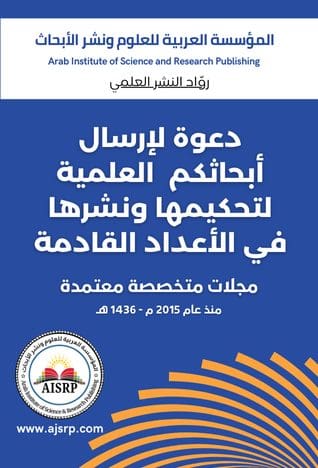Abstract:
Objectives: To assess the attitude of primary health care physician regarding promoting regular physical activity; to identify the perceived barriers which can affect promoting regular physical activity and to identify the factors associated with promoting regular physical activity.
Subjects and methods: This is a cross-sectional study carried out from March 2017 to Jun 2018. Self-administered questionnaires were administered to primary health care physicians.
Results: The study included 140 (60.1%) males and 93 (39.9%) females with a total number of 233 physicians. Most of physicians had positive attitudes towards promoting physical activity in PHC as above 80 % of them either agreed or strongly agreed on the positive statements of Likert scale. The highly prevalent barriers of effective physical activity promotion as perceived by the participants were insufficient educational materials (79.4%), lack of compliance of patients (78.5%), lack of standard protocols (76.4%), and lack of available education for health professionals regarding physical activity promotion (75.5%). There were no significant differences between males and females regarding the overall attitude score and all items of the Likert scale.
Conclusions: This study shows that the majority of PHC physicians, regardless their age, sex, nationality, marital status, years of experience and job titles had highly positive attitude towards promoting physical activity in PHCCs.
Keywords:Physical activity, Physicians, Primary health care, barriers
تعزيز النشاط البدني في مراكز الرعاية الصحية الأولية ” موقف الطبيب والحواجز ” جازان – المملكة العربية السعودية
الملخص
المواضيع والطرق: هذه دراسة مستعرضة أجريت ما بين الفترة من مارس 2017 إلى يونيو 2018م. مشتملة على استبيانات تدار ذاتيا بين أطباء الرعاية الصحية الأولية.
النتائج: اشتملت الدراسة على عدد 140 من الأطباء بنسبة (60.1%) من ذكور و 93 بنسبة (39.9%) إناث بإجمالي عدد 233 طبيباً. كان لدى معظم الأطباء مواقف إيجابية تجاه تعزيز النشاط البدني في الرعاية الصحية الأولية، حيث إن نسبة الـ80% منهم ” وافقوا ” أو ” وافقوا بشدة ” على البيانات الإيجابية لمقياس (Likert). وقد تمثلت الحواجز العالية الانتشار لتعزيز النشاط البدني الفعال كما يراها المشاركون في: المواد التعليمية غير الكافية بنسبة (79.4%)، وعدم امتثال المرضى نسبة (78.5%)، ونقص البروتوكولات القياسية نسبة (76.4%)، ونقص التعليم المتاح للعاملين في مجال الصحة فيما يتعلق بالترويج للنشاط البدني نسبة (75.5%). بيد أنه لم تكن هنالك فوارق ذات دلالة إحصائية بين الذكور والإناث بشأن درجة الموقف العام وجميع البنود من مقياس (Likert).
الاستنتاجات: توضح هذه الدراسة أن غالبية أطباء الرعاية الصحية الأولية، بغض النظر عن اختلافهم في: الأعمار، الجنس، الجنسية، الحالة الاجتماعية، سنوات الخبرة والمسميات الوظيفية لديهم موقف إيجابي للغاية تجاه تعزيز النشاط البدني في مراكز الرعاية الصحية الأولية
الكلمات المفتاحية: النشاط البدني، الأطباء، الرعاية الصحية الأولية، الحواجز
Authors /
Hamood Mohammed Mohammed Hassan 1
Mohammed Ibrahim Hakami 1
Mohamed Salih Mahfouz 2
1.Ministry of health || Jazan || KSA
2.Faculty of Medicine || Jazan University || KSA



